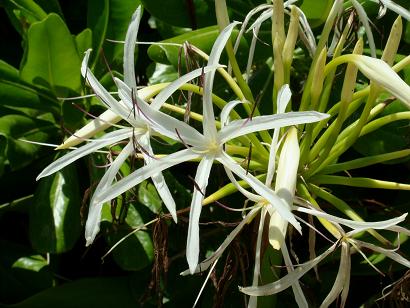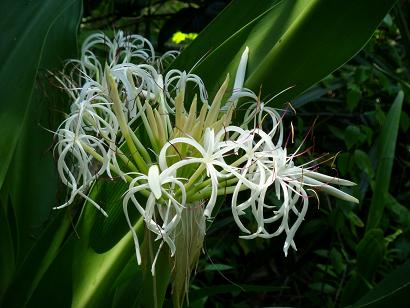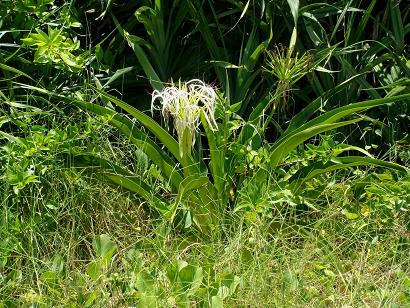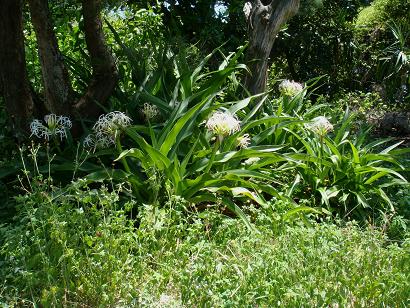| Family |
Amaryllidaceae |
| Scientific name |
Crinum asiaticum L. var. japonicum Baker |
| Synonyms |
Crinum asiaticum L. var. declinatum (Herbert) C. B. Clarke; Crinum asiaticum
L. var. pictum Siebold; Crinum japonicum (Baker) Hannibal; Crinum maritimum
Siebold ex Nakai |
| Common name |
(Japanese common name) hama-omoto (ハマオモト, 浜万年青 [meaning: coastal omoto
(omoto = Rohdea japonica)], hama-yu [coastal white cloth]), hama-yu (ハマユウ, 浜木綿 [meaning: beach
cotton cloth]) |
| (English common name) beach lily, grand crinum, poison bulb |
| Distribution |
(Japan) Honshu (west of Kanto region), Shikoku, Kyushu, Okinawa |
| (Other nations) Korea |
| Habitat |
Beach, fields near seaside |
| Chromosomal number |
2n=22 |
| Description |
Leaves 30-60cm long, 4-9cm wide. Scapes 50-80cm tall. Flowers white involcral
segments 6-10cm, flowering in July to September. Evergreen. Perennial plants. |
| Reference |
Crinum asiaticum L. |
| Crinum asiaticum L. |
| Ecological and phytosociological studies on Crinum asiaticum var. japonicum community |
| On the Constituents of the Bulbs of Crinum asiaticum var. japonicum BAK. On the Neutral Constituents |
| Crinamine from Crinum asiaticum var. japonicum inhibits hypoxia inducible factor-1 activity but not activity of hypoxia inducible factor-2 |
| Production of ascorbic acid in plants (US Patent 6469149/2002) |
| Composition and method for treatment of inflammation and pain in mammals (US Patent 6534086/2003) |
| Method for treatment of inflammation and pain in mammals (US Patent 6949260/2005) |
| Use of a polypeptide for detecting, preventing or treating a pathological condition associated with a degenerative, neurological or autoimmune disease (US Patent 7081345/2006) |
| Composition comprising an extract of Crinum asiaticum Linne having anti-allergic and anti-inflammatory activity (WIPO Patent WO/2007/004832) |
| Remedies (European Patent EP1563841/2005) |






